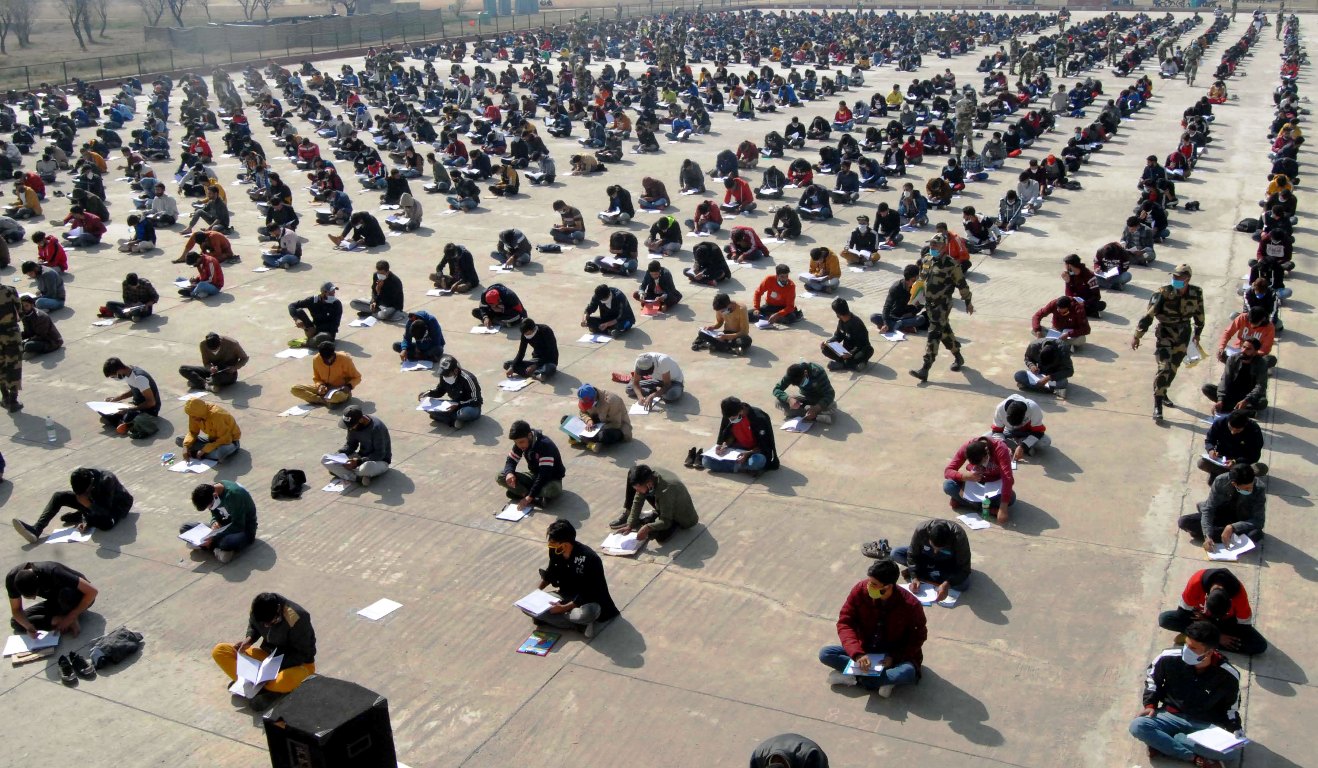by Minhaj Masoodi
SRINAGAR: Right now, Jammu and Kashmir has the largest unemployment rate in India, as per the latest revelations by the Centre for Monitoring Indian Economy Private Limited (CMIE).

According to the report, the unemployment rate in Jammu and Kashmir for the month of September 2021 is 21.6 per cent, which is more than three times the national average, 6.9 per cent.
The unemployment rate has increased from 13.6 per cent in August 2021 to 21.6 per cent in September, perhaps the highest quantum jump ever. This comes at a time when the central government, which is ruling Jammu and Kashmir directly, has been claiming about taking Jammu and Kashmir on to the path of development. Jammu and Kashmir, interestingly, is the only region in India with an unemployment rate of a whopping 20 per cent plus.
Though unemployment has always remained a key concern for successive governments, this is for the first time that the rate of unemployment has gone through the roof.
During the BJPDP’s coalition government, the rate in December 2018 was merely 9.1 per cent. Before the reading down of Article 370 in August 2019, the unemployment rate as per CMIE for the month of July was 16.3 per cent, which, however, rose to 22.4 per cent in that fateful month. It, however, would be an interesting study to investigate how the rate of unemployment appreciated to 22.4 per cent in August when the entire Jammu and Kashmir was under curfew and lock and key, literally till late September.
Ever since the August 2019 decision, the unemployment rate has crossed the 20 per cent mark for the sixth time. It was 22.4 per cent in August, 20.7 per cent in October 2019, 21.1 per cent in January 2020, 20.8 per cent in February 2020, 21.9 per cent in January 2021 and 21.6 per cent in September 2021.
The unemployment figures, it is worth mentioning here, had also fallen down into single digits during November 2020 and March, this year.
While Jammu and Kashmir’s private sector has remained a fragile activity given the security situation and the pandemic, the changes in the public sector job creation have not been very encouraging. In Jammu and Kashmir, the government has traditionally remained the employer of last resorts, a distinction that the policymakers are keen to shed.
Last year, when the Jammu and Kashmir Services Selection Board advertised around 8000 Class IV posts, more than 540 thousand (more than half a million) aspirants, many of them with post-graduate degree holders and doctorates among the applicants. It eventually issued an order asking “overqualified” candidates to withdraw voluntarily or face the punishment of never being considered for an SSB job.
The level of unemployment can be assessed by the fact that SSB collected more than Rs 77 crore as the mandatory fee from the job aspirants for making the selections in the last few years.

Speaking at Harvard US India Initiative (HUII) in February 2021, Lt Governor Manoj Sinha had said, “My goal is to reach out and engage about 80 per cent of the young population of Jammu and Kashmir within the next five years and make it possible for them to be an engine of growth for the overall socio-economic transformation of the UT.”
However, the figures puncture that claim with many of the postgraduates and PhD holders sitting at their homes. The informal sector in Jammu and Kashmir is also pushed to the wall due to three successive lockdowns imposed in the region while the public sector also remains overstretched.
This comes at a time when the LG Sinha led administration had also promised an investment of Rs 25000-30000 crore, which was expected to create around 450 thousand jobs across Jammu and Kashmir.
Meanwhile, the Jammu and Kashmir National Conference has expressed grave concern on CMIE figures saying the 21.6 per cent unemployment rate belies all the claims of the incumbent administration on providing employment to educated, skilled youth of Jammu and Kashmir.
“The figures lay bare the hoax of much-touted Job extravaganza promised by GOI after the unconstitutional abrogation of Art 370 on August 5, 2019. These figures placing JK lower than the national average have busted their fake narrative and punctured the cosmetic development pomp and show of GOI, and the incumbent JK Admin,” party spokesman Imran Nabi said. “Besides peace and tranquillity sliding backwards, J&K has seen choking employment since 2019. CMIE data attests to this fact. J&K registering a 21.6 per cent unemployment rate is compelling evidence of the prevailing situation in JK. In addition, the combined unemployment ratio revealed by the ministry of statistics and programme implementation has also revealed the grave unemployment at staggering 17.8 per cent, which is also higher than the national average.”
“The GOI’s policies premising on terminating employees and outsourcing the recruitment have further aggravated the problem. Of late some posts were advertised for which exams were also held by JKSSB but the process has, unfortunately, hit the skids. What is adding to the worries of our youth is the failure of the government to come up with a sound absorption policy at college, and university level,” he added.
He further said that the failure of the GOI in addressing the soaring unemployment in JK has become one of the factors for suicides, drug addiction, and substance use. “Our educated youth see no light at the end of the tunnel. The administration is doing nothing to help them. Lack of substantial policy intervention to give a flip to entrepreneurship, fast-tracking of recruitment, and protecting the employment interests of our youth is a far cry and not on the to-do list of the government. If this policy paralysis persists, our youth would be pushed to the wall,” he said.















